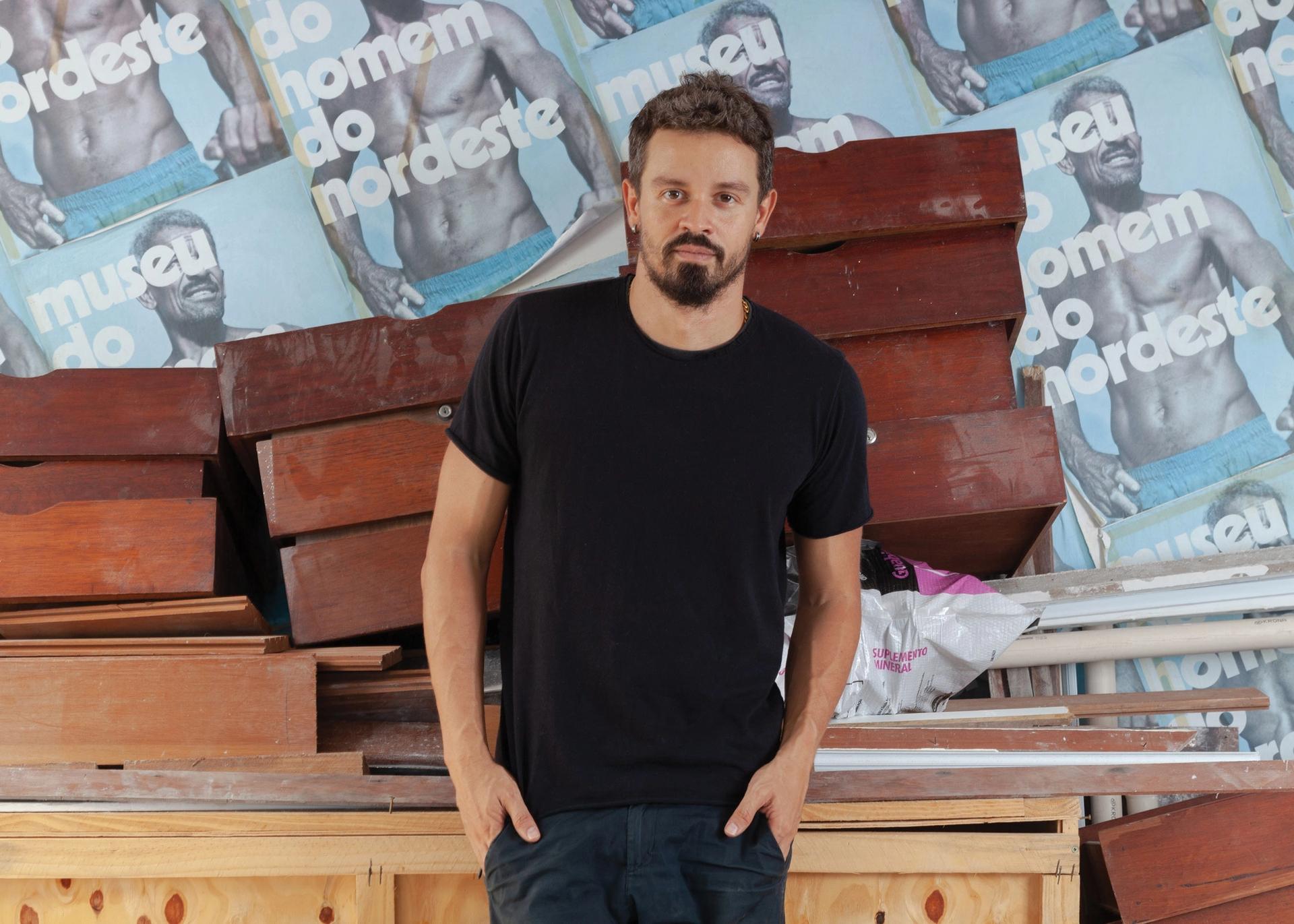After five years under the presidency of the far-right Jair Bolsonaro, a devastating pandemic that has seen 650,000 dead, and increased deforestation and environmental crimes in the Amazon, Jonathas de Andrade—the artist representing Brazil at the Biennale—admits his job is a tough one.
“It is a huge challenge given the politically intense scenario that we have at the moment,” the Recife-based artist says. “A Brazil with ecological tragedies and urgent social and political challenges. Representing Brazil at this moment is also an opportunity to talk about this [country] in shock, which sees tragedies pass on the timeline without being able to react.”

De Andrade says that “representing Brazil at this moment is also an opportunity to talk about this [country] in shock” Photo: Jéssica Bernardo; © Stephen Schiff, courtesy of the artist
De Andrade has the experience to rise to the occasion, however. For over a decade he has offered wry commentary on Brazilian society and the country’s fraught identity, specifically questioning how bodies, often Black, male and working class, are perceived, judged and fetishised.
De Andrade says his show will be reminiscent of the science fairs he visited as a child, not least his memories of Eva, a 45m-long anatomical sculpture of a woman that toured Brazil in the 1980s. Children would queue for hours to see inside her body, yet the features of this education aid, with her blonde hair and white European looks, were at odds with the population of de Andrade’s northeast Brazil.
In 2014 de Andrade created the Museu do Homem do Nordeste, a commentary on a museum of the same name founded in 1979, which claimed to tell the story of the predominantly Afrobrazilian northeast of the country through artefacts and historical objects. In de Andrade’s retelling, the region’s character is read instead through images of the people themselves, with an installation featuring photographs, workers’ uniforms and tools of manual labour. Just as political is his most recent work prior to Venice, a photoshoot for his solo show at the Foam photography museum in Amsterdam, which saw a group of women from the Brazilian village of Tejucupapo restage a 17th-century battle with the Dutch, in which the women of the community fought off colonialist forces.
In Venice, each work in de Andrade’s “fair” will take inspiration from a different Brazilian Portuguese turn of phrase, all of which incorporate a reference to the body. “I realised that there are literally hundreds of popular expressions with body parts to describe feelings and situations,” he says. “They involve literality and absurdity to account for subjectivity, which for the moment in Brazil is very revealing.” The exhibition title, Com o coração saindo pela boca [With the heart coming out of the mouth], is one example. “It is an expression that conveys a sensation of a peak of emotion, but carries a certain ambiguity. It’s as much about dramatic moments as it is about visceral emotions and passions.” Brazil has had its fair share of drama in recent history. “For me, it talks about a feeling of Brazil that constantly oscillates between being moved by its own power, like watching in disbelief so many events that seem to tear the soul, day after day,” the artist adds. “Expressions in this collection make up this national emotional panorama.”
Brazil
Artist: Jonathas de Andrade
Organisers: Jacopo Crivelli Visconti; José Olympio da Veiga Pereira, Fundação Bienal de São Paulo
Where: Giardini


